This article was co-authored by Luba Lee, FNP-BC, MS. Luba Lee, FNP-BC is a Board-Certified Family Nurse Practitioner (FNP) and educator in Tennessee with over a decade of clinical experience. Luba has certifications in Pediatric Advanced Life Support (PALS), Emergency Medicine, Advanced Cardiac Life Support (ACLS), Team Building, and Critical Care Nursing. She received her Master of Science in Nursing (MSN) from the University of Tennessee in 2006.
There are 7 references cited in this article, which can be found at the bottom of the page.
wikiHow marks an article as reader-approved once it receives enough positive feedback. In this case, several readers have written to tell us that this article was helpful to them, earning it our reader-approved status.
This article has been viewed 353,822 times.
Gargling is an important step in your oral hygiene routine. It helps clear out bacteria from parts of your mouth that you can’t reach during brushing or flossing. It can also help prevent upper respiratory infections, or speed up your recovery if you already have one. Some people find gargling difficult or uncomfortable, but you can learn how to gargle safely and easily in the comfort of your own bathroom.
Steps
Proper Technique
-
1Find a clean glass. This is now your "gargling cup." While you don't have to use a special cup to put your gargling liquid in, it's often safer than drinking directly out of a bottle of mouthwash, for example, because you avoid transmitting bacteria.
-
2Fill your gargling cup with your gargling liquid of choice. A little bit is fine—better to start out with less than with too much.Advertisement
-
3Put a small amount of the liquid in your mouth and swish it around. The goal is to try to get the front and sides of the mouth, areas that gargling won't get, during this first sweep.
- Move your cheeks in and out, and your tongue back and forth, to swish the gargling liquid back and forth in your mouth.
- Some people enjoy warming the gargling liquid up a bit before gargling. While it probably won't be pleasant if you're using mouthwash, warm water and a little bit of salt feels nice in the back of the mouth.
-
4Tilt your head back, and without swallowing the liquid, try to open your mouth and make an "ahhh" sound. Keep the small flap in the back of your throat, the epiglottis, closed so that none of the liquid gets accidentally swallowed.
- This may take a bit of time to get used to, but when done correctly, the vibrations in the back of your mouth will cause the gargling liquid to move about, almost as if the liquid were boiling.
- Gargling will coat the back of the mouth with whatever liquid you choose, eliminating some bacteria and soothing a sore throat.
-
5Spit the gargling liquid out into the sink. Continue with your oral health routine by brushing your teeth or flossing.
Liquids for Gargling
-
1Gargle with a simple salt water (saline) solution for respiratory health. Mix a half-teaspoon (3 g) of salt in 1 cup (240 mL) of warm water. Stir the mixture to dissolve the salt. Gargle the saline solution 3 times a day to help prevent respiratory tract infections.
- One study found that people who gargled a simple salt solution 3 times a day had a 40% decrease in upper respiratory tract infections.[1]
- Not only does the saltwater gargle appear to ease cold symptoms, but it also keeps you healthier during cold and flu season.[2]
- Other studies point to evidence that saline solutions help fight against sore throats and congestion.[3]
-
2Try a commercial or homemade mouthwash for fresh breath. Mouthwash helps simultaneously freshen your breath, clean your mouth, and fight against infection. Mouthwashes are used by millions of people, morning and night, as part of their oral health routine.
- Mouthwashes with alcohol tend to be more potent but carry the risk of several adverse side effects, including mouth ulcers, corroded fillings, and even the elevated threat of cancer.[4] Use them sparingly.
- You can also make your own mouthwash if you'd like. In fact, it's quite easy. Here are some quick and refreshing recipes:
- Peppermint and tea tree mouthwash
- Angelica mouthwash
- A host of other simple mouthwashes
-
3Use a simple baking soda and water combination to ease mouth sores. Sodium bicarbonate, or baking soda, is a renowned cleaner used for tons of home applications. Who knew it made such a great mouthwash? To make a baking soda mouthwash, dissolve 1 teaspoon (5 g) of baking soda in .5 cups (120 mL) of warm water.[5] If you want, you can add a few drops of peppermint oil to boost the flavor and freshen your breath.
- Studies show that a baking soda rinse can help balance the pH in your mouth and make it less friendly to acid-loving bacteria.[6] It’s also great for soothing the pain of canker sores and other mouth ulcers.
-
4Try adding lemon and honey to hot water for a soothing gargle. Honey and lemon are both soothing to the throat.[7] Another benefit of this gargling liquid is that it's actually something that you can drink after gargling, unlike the other solutions. Try adding a 1 tablespoon (15 mL) each of honey and lemon juice to 6 fluid ounces (180 mL) of water. Gargle the mixture, then swallow it, especially if you have a sore throat or want to eliminate some mucous.
-
5Swish some chamomile tea to ease a scratchy throat. Just like the honey and lemon gargle, you can swallow tea after you’re done gargling it. Brew yourself a cup of chamomile tea and wait until it’s pleasantly warm, but not scalding hot. Take a sip and gargle it for a moment before swallowing.[8]
- Chamomile tea is especially helpful for lubricating your throat if you’re hoarse.
- Other kinds of herbal teas, such as peppermint and raspberry, are also soothing when your throat is sore or inflamed.
Our Most Loved Articles & Quizzes
Expert Q&A
-
QuestionHow many times should I gargle for each session?
 Luba Lee, FNP-BC, MSLuba Lee, FNP-BC is a Board-Certified Family Nurse Practitioner (FNP) and educator in Tennessee with over a decade of clinical experience. Luba has certifications in Pediatric Advanced Life Support (PALS), Emergency Medicine, Advanced Cardiac Life Support (ACLS), Team Building, and Critical Care Nursing. She received her Master of Science in Nursing (MSN) from the University of Tennessee in 2006.
Luba Lee, FNP-BC, MSLuba Lee, FNP-BC is a Board-Certified Family Nurse Practitioner (FNP) and educator in Tennessee with over a decade of clinical experience. Luba has certifications in Pediatric Advanced Life Support (PALS), Emergency Medicine, Advanced Cardiac Life Support (ACLS), Team Building, and Critical Care Nursing. She received her Master of Science in Nursing (MSN) from the University of Tennessee in 2006.
Board-Certified Family Nurse Practitioner Fill up a glass with gargling solution, take small sips and gargle for a few seconds, spit it all out, repeat the process until the entire glass of gargling solution is gone.
Fill up a glass with gargling solution, take small sips and gargle for a few seconds, spit it all out, repeat the process until the entire glass of gargling solution is gone.
References
- ↑ http://www.ncbi.nlm.nih.gov/pubmed/16242593
- ↑ http://well.blogs.nytimes.com/2010/09/27/gargling-with-salt-water-for-colds/
- ↑ http://www.nytimes.com/2010/09/28/health/28real.html
- ↑ https://goaskalice.columbia.edu/answered-questions/alcohol-mouthwash-harmful-cancer/
- ↑ https://www.mayoclinic.org/diseases-conditions/canker-sore/diagnosis-treatment/drc-20370620
- ↑ https://www.ncbi.nlm.nih.gov/pmc/articles/PMC5773983/
- ↑ https://www.pennmedicine.org/updates/blogs/health-and-wellness/2018/february/sore-throat
- ↑ https://www.pennmedicine.org/updates/blogs/health-and-wellness/2018/february/sore-throat
About This Article
To gargle, fill a glass with salt water, mouthwash, or a baking soda and water mixture. Sip a small amount of the solution into your mouth and swish it around the front and sides. After swishing, tilt your head back, and make an “ahh” sound with your throat, making sure that you don't swallow any liquid. This will cause the liquid to move around and coat the back of the mouth. For tips on choosing the best gargling solution for your needs, keep scrolling!

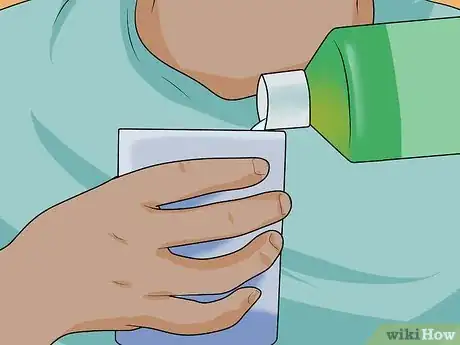


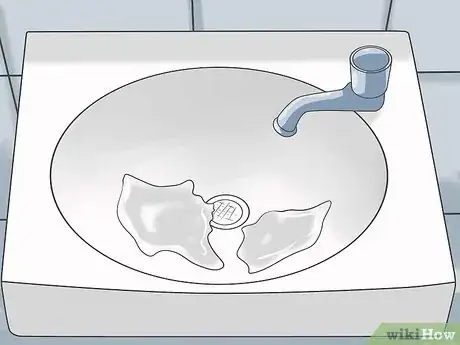

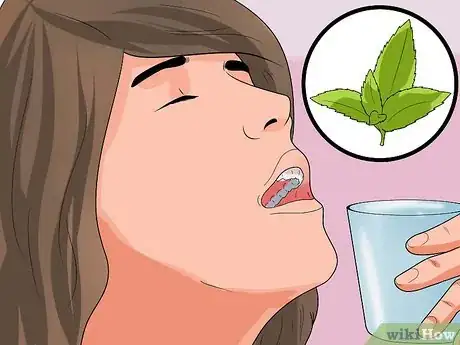

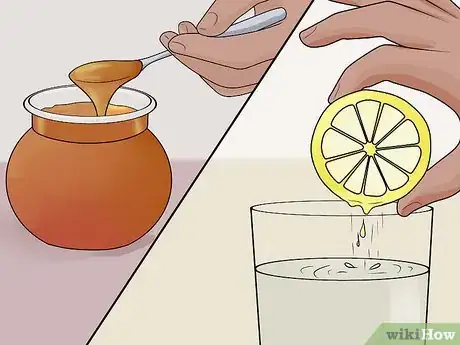







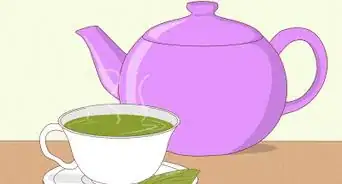



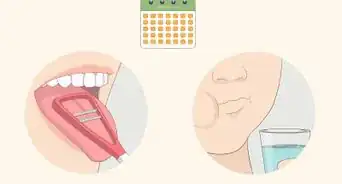


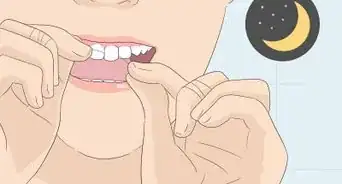
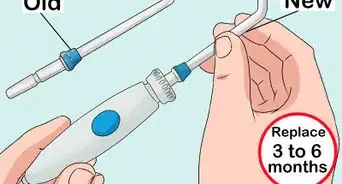
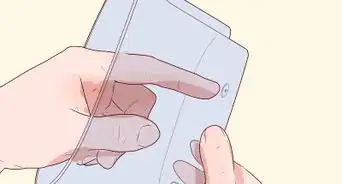

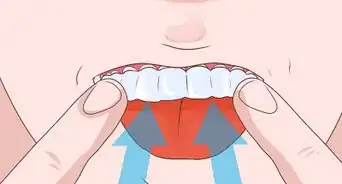











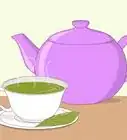































Medical Disclaimer
The content of this article is not intended to be a substitute for professional medical advice, examination, diagnosis, or treatment. You should always contact your doctor or other qualified healthcare professional before starting, changing, or stopping any kind of health treatment.
Read More...